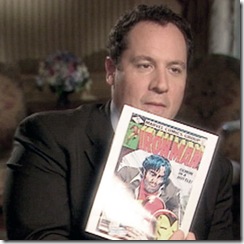Why You Should Optimize for Zero-Volume Keywords
Optimizing for zero-volume keywords might seem counterintuitive at first glance. After all, the term “zero-volume” implies that these keywords have no search traffic, which is typically a crucial metric for SEO strategies. However, there are several compelling reasons why focusing on these keywords can be beneficial for your digital marketing efforts.
1. Reduced Competition
- Less Crowded Space: Zero-volume keywords often have significantly less competition compared to high-volume keywords. This reduced competition means you have a better chance of ranking higher in search engine results pages (SERPs) for these terms.
- Easier to Dominate: With fewer competitors, it’s easier to establish your brand as an authority in a specific niche or sub-niche related to these keywords.
2. Targeted Content
- Precision Targeting: Zero-volume keywords can be very specific and targeted, allowing you to create content that precisely matches the needs of a particular audience segment. This precision can lead to higher engagement and conversion rates.
- Relevance: By focusing on niche topics, you can ensure that your content is highly relevant to the users searching for these terms, improving user experience and satisfaction.
3. Long-Tail Opportunities
- Long-Tail Keywords: Many zero-volume keywords are long-tail variations of more popular terms. Long-tail keywords typically have lower competition and higher conversion rates because they are more specific.
- Niche Dominance: By targeting long-tail keywords, you can dominate specific niches or sub-niches where your competitors might not be focusing.
4. Future Potential
- Emerging Trends: Zero-volume keywords might represent emerging trends or topics that have not yet gained widespread popularity. By optimizing for these keywords early, you can position your brand at the forefront of new trends.
- First-Mover Advantage: Being one of the first to optimize for a keyword can give you a significant advantage as the topic gains traction and search volume increases. Stick your neck out, have a little faith in your assumptions re: the search habits of the vertical you’re targeting, and see what happens.
5. Brand Differentiation
- Unique Content: Creating content around zero-volume keywords allows you to differentiate your brand by offering unique insights or perspectives that others are not covering. This means a shorter path to moving the needle on increasing transactional traffic.
- Authority Building: By covering niche topics comprehensively, you can establish your brand as a thought leader in your industry, enhancing credibility and trust among your audience.
6. SEO Strategy Evolution
- Adaptability: Focusing on zero-volume keywords forces you to be more adaptable and innovative in your SEO strategies. This adaptability can help you stay ahead of algorithm changes and evolving user behaviors.
- Diversified Portfolio: Including zero-volume keywords in your SEO strategy can diversify your keyword portfolio, reducing dependence on a few high-volume terms and making your strategy more resilient.
So, what have we learned, cowboys? Optimizing for zero-volume keywords offers a strategic opportunity to differentiate your brand, reduce competition, and capitalize on emerging trends. By incorporating these keywords into your SEO strategy, you can enhance your brand’s visibility and authority in niche areas, setting the stage for long-term success.










 Linkbait can be a very effective tool for search engine optimization. Social media is important for marketing your small or large business in 2009. The sky is blue. Women have secrets. Thanks for nothing, Dave. We’re actually dumber for having listened to you just now. You’re so very welcome, and do you know of a bank in the vicinity where I can cash your seminar check?
Linkbait can be a very effective tool for search engine optimization. Social media is important for marketing your small or large business in 2009. The sky is blue. Women have secrets. Thanks for nothing, Dave. We’re actually dumber for having listened to you just now. You’re so very welcome, and do you know of a bank in the vicinity where I can cash your seminar check? Valentine’s Day History
Valentine’s Day History
